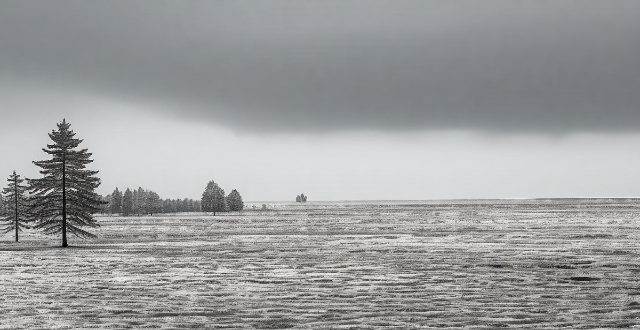This article discusses how weather conditions can influence wildlife viewing opportunities. It highlights the effects of rainfall, snowfall, temperature changes, and wind conditions on both wildlife behavior and viewers' experiences. By understanding these factors, enthusiasts can plan their excursions strategically and increase their chances of encountering various species in their natural habitats.

Weather Conditions and Wildlife Viewing Opportunities
Weather conditions can have a significant impact on wildlife viewing opportunities. Different weather patterns can affect the behavior, activity levels, and visibility of various species. Here are some ways in which weather conditions can influence wildlife viewing:
Rainfall
Effects on Wildlife
- Increased Activity: Some animals, such as amphibians and reptiles, become more active during rainy periods as they take advantage of the moisture to hunt or mate.
- Reduced Visibility: Heavy rainfall can make it difficult to spot certain animals, especially those that blend into their surroundings or hide under foliage.
- Altered Behavior: Predators may find it harder to locate prey during heavy rains, while prey species may seek shelter to avoid being seen.
Effects on Viewing Opportunities
- Challenges for Viewers: Wet conditions can make it challenging for viewers to move around easily, potentially limiting access to certain areas.
- Enhanced Habitat Appeal: Rainfall can create stunning landscapes with waterfalls, streams, and lush greenery, making habitats visually appealing.
Snowfall
Effects on Wildlife
- Limited Movement: Deep snow can restrict the movement of certain animals, making them easier to spot in open areas but harder to find in densely wooded regions.
- Altered Feeding Patterns: Animals may adjust their feeding habits due to limited food availability under snow cover.
- Increased Energy Needs: Cold temperatures require animals to expend more energy to stay warm, leading to increased foraging activity.
Effects on Viewing Opportunities
- Improved Tracking: Fresh snowfall can reveal animal tracks, providing clues about recent activity and movement patterns.
- Winter Landscapes: Snow-covered landscapes offer unique beauty and photo opportunities, especially for majestic creatures like elk or bighorn sheep against a snowy backdrop.
- Challenges for Access: Winter weather can create hazardous conditions for viewers, requiring specialized gear and knowledge to navigate safely.
Temperature Changes
Effects on Wildlife
- Thermoregulation: Animals must regulate their body temperature in response to changing temperatures, which can affect their daily activities and patterns.
- Migration: Some species migrate to warmer climates during colder months or cooler areas during hot summers.
- Breeding Seasons: Temperature changes can trigger breeding seasons for certain animals, leading to increased activity and interactions.
Effects on Viewing Opportunities
- Seasonal Variations: Different seasons bring unique wildlife viewing experiences, from springtime bird migrations to fall mating rituals of elk and other ungulates.
- Adaptive Clothing: Viewers must dress appropriately for varying temperatures to ensure comfort and safety throughout the day.
- Optimal Timing: Knowing when specific animals are most active based on temperature fluctuations can enhance viewing success.
Wind Conditions
Effects on Wildlife
- Disruption of Senses: Strong winds can interfere with an animal's sense of smell and hearing, making it harder for them to detect predators or prey.
- Sheltering Behavior: Animals may seek shelter from windy conditions, reducing their visibility to viewers.
- Energy Expenditure: Fighting against strong winds can be energetically costly for flying birds or small mammals attempting to move through the air.
Effects on Viewing Opportunities
- Challenges for Spotting: High winds can make it difficult to spot animals that rely on camouflage or stillness to avoid detection.
- Sound Disturbances: Wind noise can mask the sounds of approaching animals or their vocalizations, making them harder to locate by sound alone.
- Safety Concerns: Windy conditions can pose risks for viewers, such as blowing debris or unstable footing near cliffs or water bodies.
In conclusion, understanding how weather conditions affect wildlife viewing opportunities allows enthusiasts to plan their excursions strategically and increase their chances of encountering various species in their natural habitats. By being prepared for different weather scenarios and adapting accordingly, viewers can enjoy rewarding wildlife experiences while minimizing any negative impact on the animals themselves.